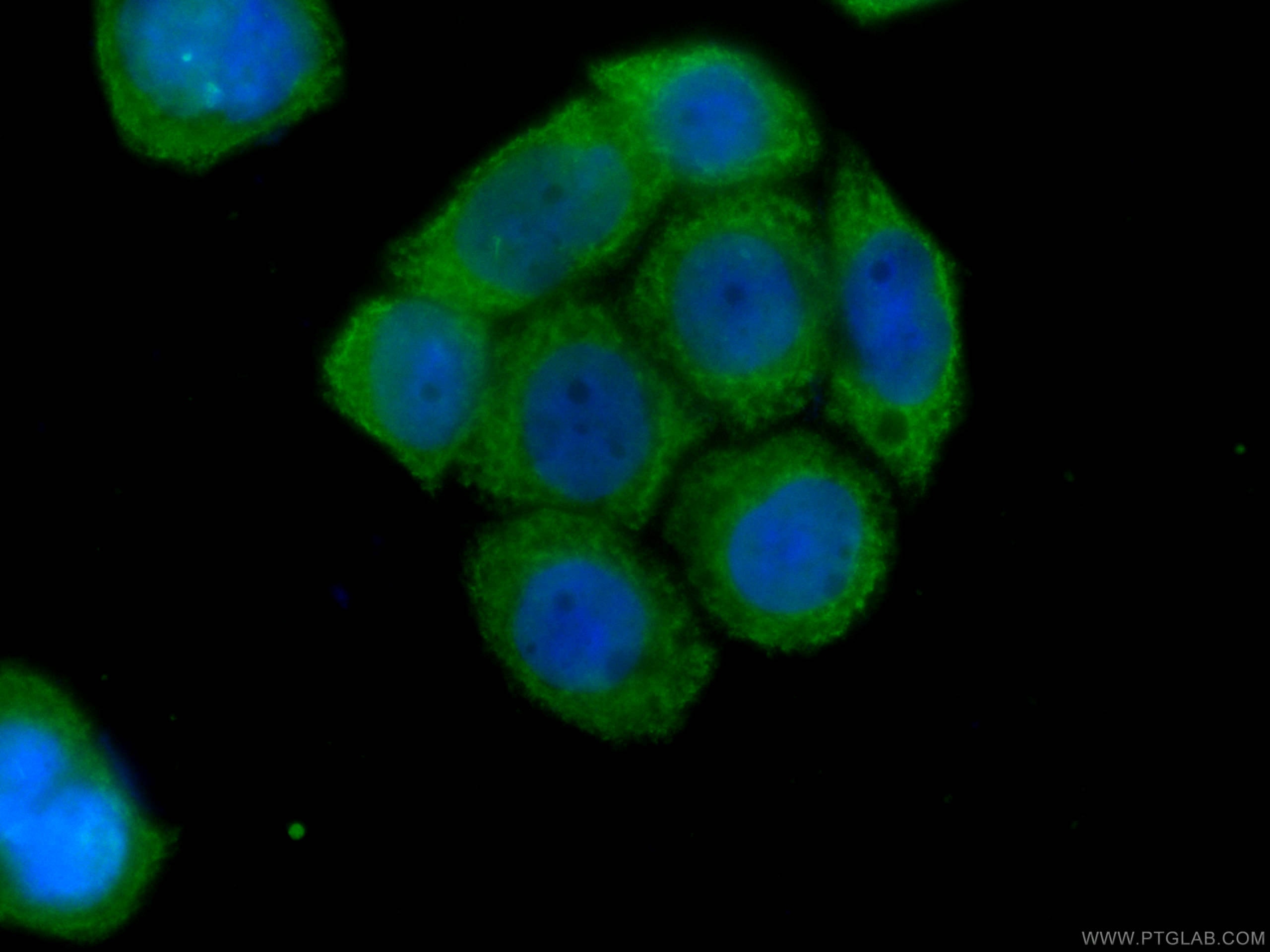- Featured Product
- KD/KO Validated
CoraLite® Plus 488-conjugated EPLIN Monoclonal antibody
EPLIN Monoclonal Antibody for IF
Host / Isotype
Mouse / IgG1
Reactivity
human, rat
Applications
IF
Conjugate
CoraLite® Plus 488 Fluorescent Dye
CloneNo.
6E6E6
Cat no : CL488-66071
Synonyms
Validation Data Gallery
Tested Applications
| Positive IF detected in | HeLa cells |
Recommended dilution
| Application | Dilution |
|---|---|
| Immunofluorescence (IF) | IF : 1:50-1:500 |
| It is recommended that this reagent should be titrated in each testing system to obtain optimal results. | |
| Sample-dependent, Check data in validation data gallery. | |
Product Information
The immunogen of CL488-66071 is EPLIN Fusion Protein expressed in E. coli.
| Tested Reactivity | human, rat |
| Host / Isotype | Mouse / IgG1 |
| Class | Monoclonal |
| Type | Antibody |
| Immunogen | EPLIN fusion protein Ag13288 |
| Full Name | LIM domain and actin binding 1 |
| Calculated Molecular Weight | 85 kDa |
| Observed Molecular Weight | 90 kDa, 110 kDa |
| GenBank Accession Number | BC001247 |
| Gene Symbol | LIMA1 |
| Gene ID (NCBI) | 51474 |
| RRID | AB_2883250 |
| Conjugate | CoraLite® Plus 488 Fluorescent Dye |
| Excitation/Emission Maxima Wavelengths | 493 nm / 522 nm |
| Form | Liquid |
| Purification Method | Protein G purification |
| Storage Buffer | PBS with 50% Glycerol, 0.05% Proclin300, 0.5% BSA, pH 7.3. |
| Storage Conditions | Store at -20°C. Avoid exposure to light. Stable for one year after shipment. Aliquoting is unnecessary for -20oC storage. 20ul sizes contain 0.1% BSA. |
Background Information
EPLIN is a cytoskeletal protein that is preferentially expressed in epithelial cells and is implicated in regulation of cytoskeletal dynamics and cytokinesis. In human, there are two known isoforms, EPLIN-a and -b, generated by alternative promoter usage from a single gene. EPLIN-a expression is often down-regulated in cancerous cells and tissues. This antibody recognizes both of isoforms of EPLN.
Protocols
| Product Specific Protocols | |
|---|---|
| IF protocol for CL Plus 488 EPLIN antibody CL488-66071 | Download protocol |
| Standard Protocols | |
|---|---|
| Click here to view our Standard Protocols |


